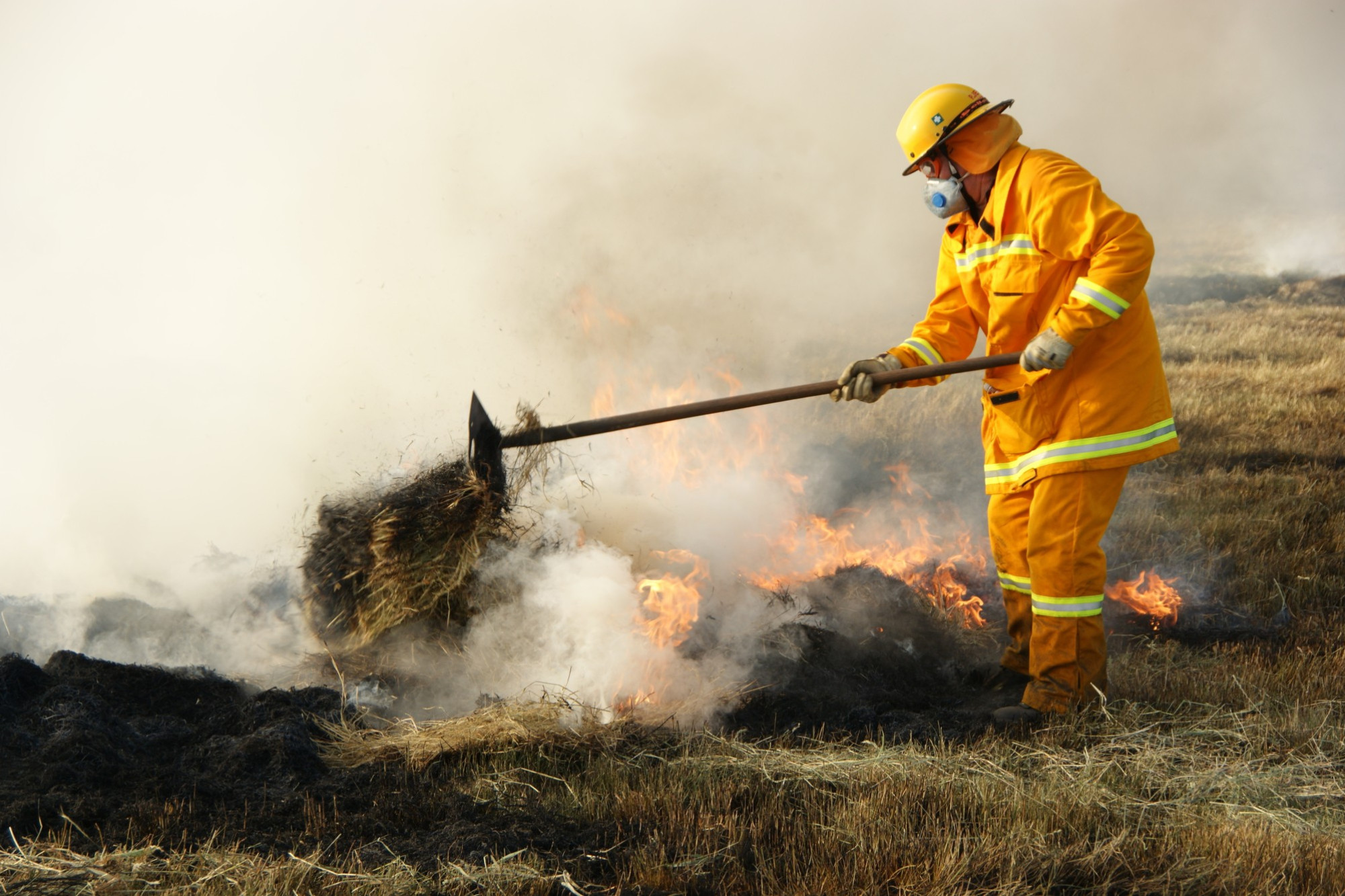General News
5 October, 2023
Summer Series: Avoiding hay fires
Farmers are being urged to be vigilant as an earlier start to the hay season and high moisture content could lead to haystack related fires this summer, something Avoca Fire Brigade Captain Aaron McHoul has seen a number of times in recent years...

Farmers are being urged to be vigilant as an earlier start to the hay season and high moisture content could lead to haystack related fires this summer, something Avoca Fire Brigade Captain Aaron McHoul has seen a number of times in recent years.
With a number of weather conditions including El Nino confirmed by the Bureau of Meteorology and hotter and drier conditions forecast, CFA is expecting agricultural activities to be underway sooner, which could pose a fire risk down the track.
With hay season running some three weeks ahead of time and farmers in parts of the state starting to bale their hay already, there is a heightened risk of bales spontaneously combusting due to moisture levels, CFA Chief Officer Jason Heffernan said.
“Farmers who have decided to carry on with hay production need to be extra vigilant this year to make sure conditions are right for making hay and for the future storage and transport as well,” he said.
“Hay fires are a real threat to properties and stock in primary production areas.
“Whether you’re a seasoned hay grower or switching to hay this year, it’s imperative to take care of your hay and crops this fire season.”
When hay is either not properly cured and dried out before baling or not stored to protect it from rain or damp conditions, moisture content in the bales is then higher than the recommended level.
If stored in environments with high temperatures and little airflow, a biological reaction can occur which may lead to a fire.
Avoca and district is no stranger to haystack fires, with several occurring in the last few years including one just outside Avoca in 2021 that destroyed around $90,000 worth of hay.
Avoca Fire Brigade Captain Aaron McHoul said now is a timely reminder for farmers to take precautions and be aware of the signs of spontaneous combustion before they occur.
“It’s mainly the storage of hay that is the issue, if farmers are stacking hay with a high moisture content they’re asking for trouble,” he said.
“Farmers should be regularly checking their haystacks with a thermometer or by sticking a crowbar or similar in to see if they can feel any heat.
“There’s also generally a smell that comes with heating, it can smell like burning, must or even a caramel or tobacco smell.”
When checking the temperature of your hay stack, it’s advised to insert a thermometer in a probe or a crowbar into the centre of the haystack for two hours and regularly check to see if the temperature has changed.
Haystack fires can take days to extinguish and Captain McHoul said preventing a fire in the first place was always preferable, in both stacking hay and harvesting it.
“It’s so important to have water on hand during harvest, a fire can grow significantly in the time it takes to get water to a harvester that might have sparked,” he said.
“My advice is to always have accessible water nearby and to be constantly thinking of how you can reduce the risk of fire, particularly at harvest time and baling hay when these things do happen.”
CFA advice to mitigate haystack fires includes:
• Keep haystacks to a limited size and separate your haystacks
• Monitor moisture and temperature of your hay regularly
• Watch for unusual odours such as pipe tobacco, caramel, burning or musty smells
• Store hay in separate stacks or sheds away from farm equipment and other buildings
• Keep your hay dry
• Don’t stack hay right to the top of a hay shed, allow air to circulate.